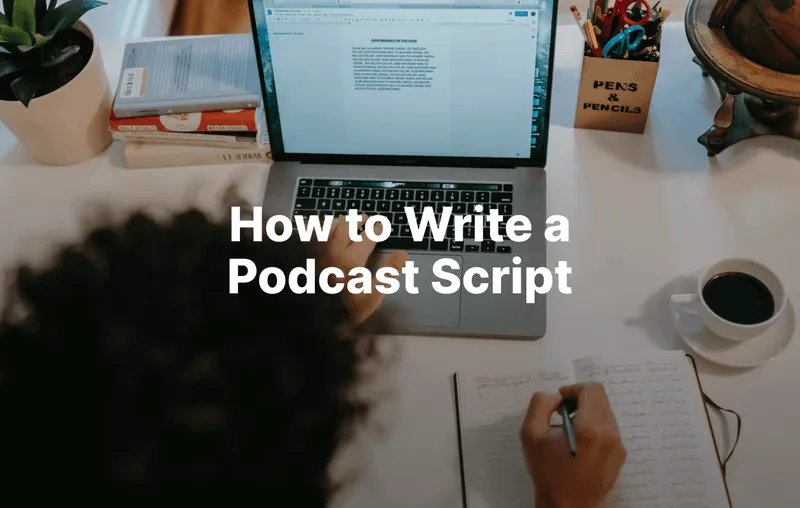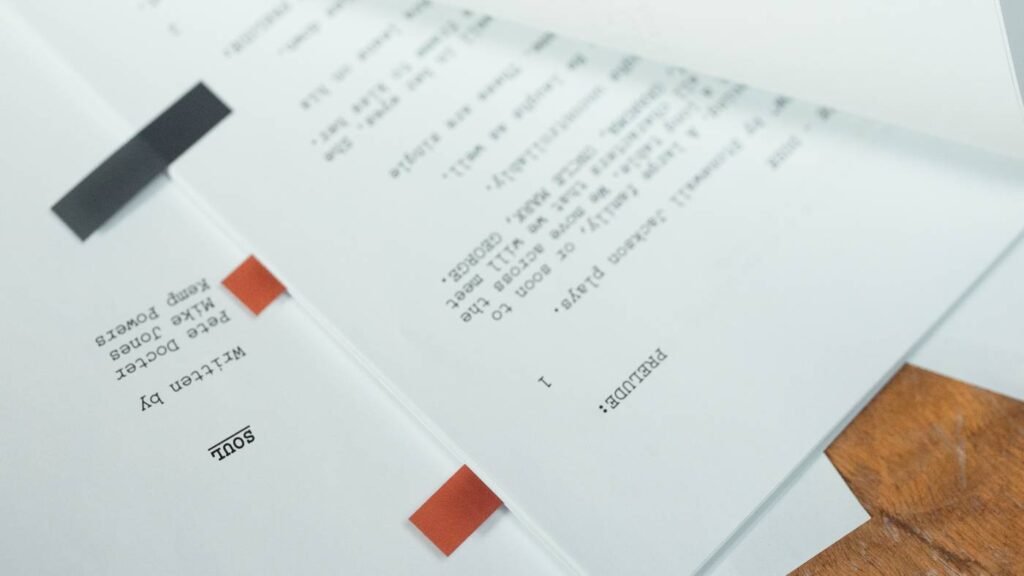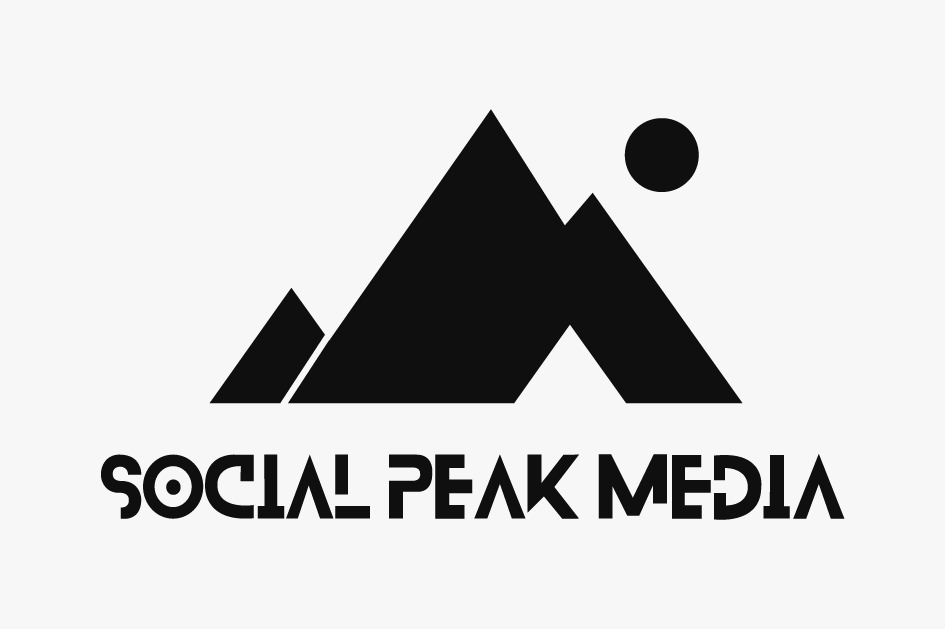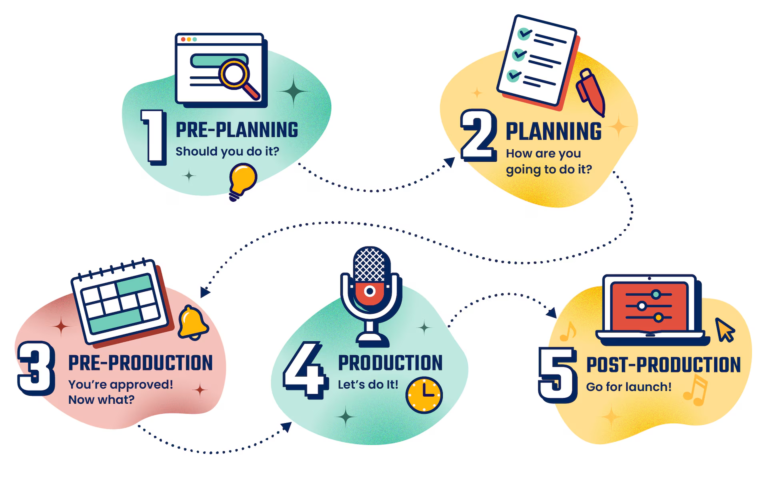How to Write a Podcast Script (+ Free Template)
Ever stared at a blinking cursor and wondered how the pros keep their podcast episodes so sharp, punchy, and on track? It’s not magic—it’s scripting. Whether you’re new to podcasting or just tired of awkward rambles, learning how to write a podcast script can be the game-changer that takes your show from “just okay” to totally binge-worthy.

In this guide, we’ll break down exactly how to write a podcast script that works for any format, share a free template, and spill a few pro tricks to keep your episodes flowing. Ready to make your next recording session way easier (and more fun)? Let’s dive in.
Why Use a Podcast Script?
Having a script isn’t about being stiff or robotic—it’s about setting yourself up for success. With a little upfront planning, you can keep your episodes focused, reduce awkward silences, and make editing a breeze. Here’s why scripting your podcast is such a game-changer:
Keeps You Organized
A script helps you stay on track and avoid rambling. When you know your main points in advance, you won’t forget what you wanted to say (or go off on random tangents that make editing a nightmare).
Saves Editing Time
Fewer mistakes and long pauses mean less post-production work. When you’re clear on what comes next, you won’t have to edit out as many “ums,” “uhs,” or off-topic rants. That’s more time enjoying your coffee, less time glued to editing software.
Improves Listener Experience
A well-structured script creates a better flow and keeps listeners engaged from the intro to the final sign-off. Your audience will notice the difference when your episodes sound more focused and intentional.
Reduces Anxiety
Knowing what you’re going to say boosts your confidence, especially for beginners. It’s a comfort blanket for your brain and helps you hit record with less stress and fewer awkward pauses.
Types of Podcast Scripts

There’s no one-size-fits-all approach to scripting. Depending on your show’s format and your personal style, you might use one of these common script types:
Full Script
Every word is written out. Best for scripted storytelling podcasts, solo shows, or anyone who’s nervous about “winging it.” Great if you want to control every detail, sound polished, or you’re still building confidence.
Outline Script
Bullet points and key talking points. Ideal for interviews, panel shows, and conversational podcasts where you want natural dialogue but still need structure. Use this if you’re comfortable improvising and want flexibility.
Hybrid Script
A mix of full script (for your intro, outro, and CTA) and outline for the main content. This is perfect for podcasters who want the best of both worlds—structure where it matters, freedom where it counts.
How to Write a Podcast Script

cmlabs
Ready to start scripting? Here’s a simple step-by-step method to get you moving:
1. Start with an Episode Outline
Define the episode title, goal, and key points. Decide what you want listeners to learn, feel, or do after the episode. Planning this upfront saves you from getting lost mid-recording.
2. Write Your Intro
Include:
- Welcome message
- Podcast name and tagline
- Brief overview of the episode’s topic
Example:
“Welcome to The Podcast Playbook, where we help you master the art of podcasting. I’m your host, [Your Name]. Today, we’re diving into [Topic].”
Your intro is your first impression—keep it short, upbeat, and on-topic.
3. Organize Main Content
List out your key points, interview questions, and any must-share stories or stats. Supporting info goes here, too. This is your “meat and potatoes” section, so organize it in a way that makes sense for your audience.
4. Write Your Outro
Include:
- Thank-you message
- Call to Action (subscribe, review, share)
- Preview of the next episode (optional)
Example:
“Thanks for tuning in! If you enjoyed this episode, please subscribe, leave a review, and share it with a friend. Visit [Your Website] for more podcasting tips.”
A strong outro reminds listeners what you want them to do next, and gives a sense of closure to your episode.
5. Add Transitions and Segues
Use clear transitions to connect segments and maintain flow. These don’t have to be fancy, just natural bridges so your episode doesn’t feel choppy or abrupt.
Free Podcast Script Template
Episode Title: [Title]
Episode Goal: [What you want listeners to gain]
Intro:
“Welcome to [Podcast Name]. I’m your host, [Your Name]. Today, we’ll be talking about [Topic].”
Main Content:
- Key Point 1
- Key Point 2
- Key Point 3
Outro:
“Thanks for listening! Subscribe, leave a review, and share this episode. Visit [Your Website] for more.”
Sample Podcast Interview Script
Episode Title: [Title]
Episode Goal: [What listeners should learn or take away]
Intro:
“Hey everyone, welcome back to [Podcast Name]! I’m your host, [Your Name], and today we’ve got an amazing guest: [Guest Name], who’s [brief bio or why they’re relevant]. We’re talking all about [Topic].”
Transition to Interview:
“Let’s dive in! [Guest Name], welcome to the show.”
Interview Questions:
- Can you tell us a little about your background and what got you started in [relevant field]?
- What’s the biggest challenge you’ve faced in [topic/industry]?
- Are there any myths or misconceptions you wish people would stop believing?
- What’s one practical tip listeners can use today?
- What’s next for you? Any projects you’re excited about?
Outro:
“Thanks so much for joining us, [Guest Name]! And thank you to everyone listening—if you enjoyed this episode, don’t forget to subscribe and leave a review. Check out [Guest’s website/social] for more.”
Sample Solo Show Script
Episode Title: [Title]
Episode Goal: [Your episode’s main purpose]
Intro:
“Welcome to [Podcast Name], I’m [Your Name], and today I want to talk about [Topic]. This episode is all about helping you [what listeners will learn].”
Main Points:
- Key Point 1 (add a story or stat)
- Key Point 2 (personal example or lesson)
- Key Point 3 (actionable takeaway)
Outro:
“That’s it for today’s episode! If you got value from this, hit subscribe and leave a review—it really helps. Want more tips? Visit [Your Website]. See you next time!”
Podcast Editing Checklist
- Remove long pauses, “um”s, and awkward silences
- Edit out any off-topic rants or bloopers
- Balance volume and audio levels
- Add intro and outro music (fade in/out for a pro touch)
- Insert transitions and sound effects (optional)
- Double-check episode length and pacing
- Export in the correct file format (usually MP3)
- Update episode title, description, and show notes
Scriptwriting Best Practices
Want to make your script even better? Here are a few pro tips:
Write How You Speak
Keep your language conversational and natural. You’re not delivering a news report—let your real personality come through!
Keep It Concise
Avoid long-winded sentences and filler words. Edit out what you don’t need, and keep things moving.
Leave Room for Personality
Even with a script, allow flexibility to improvise and respond naturally. Sometimes the best moments happen when you go off-script—just make sure you can find your way back.
Ready to Simplify Your Podcast Production?
Writing a clear, engaging podcast script helps you deliver professional episodes while reducing editing time. With a little prep, you’ll sound confident, your show will flow better, and your audience will thank you (with their ears—and their five-star reviews).






